Kia EV3 vs Mercedes EQE SUV – Performance, range & efficiency compared
Both models have their strengths – but which one suits you more?
Compare performance, efficiency, price and space directly: Kia EV3 or Mercedes EQE SUV?
Here’s where it gets real: The technical differences in detail
Costs and Efficiency: Price and efficiency are key factors when choosing a car – and this is often where the real differences emerge.
Kia EV3 has a decisively advantage in terms of price – it starts at 30800 £, while the Mercedes EQE SUV costs 71600 £. That’s a price difference of around 40705 £.
In terms of energy consumption, the advantage goes to the Kia EV3: with 14.90 kWh per 100 km, it’s noticeable more efficient than the Mercedes EQE SUV with 18.30 kWh. That’s a difference of about 3.40 kWh.
As for range, the Mercedes EQE SUV performs minimal better – achieving up to 611 km, about 6 km more than the Kia EV3.
Engine and Performance: Power, torque and acceleration are the classic benchmarks for car enthusiasts – and here, some clear differences start to show.
When it comes to engine power, the Mercedes EQE SUV has a decisively edge – offering 625 HP compared to 204 HP. That’s roughly 421 HP more horsepower.
In acceleration from 0 to 100 km/h, the Mercedes EQE SUV is decisively quicker – completing the sprint in 3.70 s, while the Kia EV3 takes 7.50 s. That’s about 3.80 s faster.
In terms of top speed, the Mercedes EQE SUV performs noticeable better – reaching 240 km/h, while the Kia EV3 tops out at 170 km/h. The difference is around 70 km/h.
There’s also a difference in torque: the Mercedes EQE SUV pulls significantly stronger with 950 Nm compared to 283 Nm. That’s about 667 Nm difference.
Space and Everyday Use: Cabin size, boot volume and payload all play a role in everyday practicality. Here, comfort and flexibility make the difference.
Both vehicles offer seating for 5 people.
In curb weight, the Kia EV3 is evident lighter – 1800 kg compared to 2440 kg. The difference is around 640 kg.
In terms of boot space, the Mercedes EQE SUV offers slightly more room – 520 L compared to 460 L. That’s a difference of about 60 L.
In maximum load capacity, the Mercedes EQE SUV performs evident better – up to 1675 L, which is about 424 L more than the Kia EV3.
When it comes to payload, Mercedes EQE SUV slightly takes the win – 580 kg compared to 470 kg. That’s a difference of about 110 kg.
All in all, the Mercedes EQE SUV shows itself to be wins the duel decisively and secures the title of DriveDuel Champion.
It impresses with the more balanced overall package and proves to be the more versatile companion for everyday use.
Kia EV3
The Kia EV3 is a testament to innovative design and sustainable driving, featuring a sleek exterior that melds form with function. Inside, the cabin offers a harmonious blend of modern technology and comfort, making every journey enjoyable for both driver and passengers. With its impressive range and eco-friendly credentials, the EV3 positions itself as a competitive player in the evolving landscape of electric vehicles.
details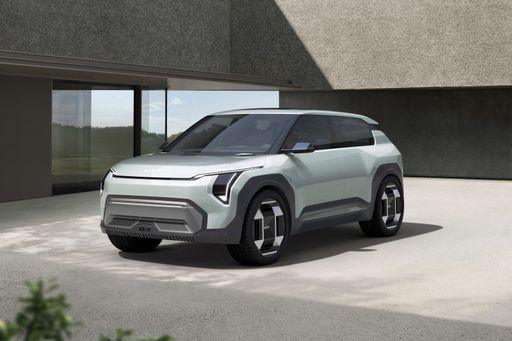 @ kiamedia.com
@ kiamedia.com
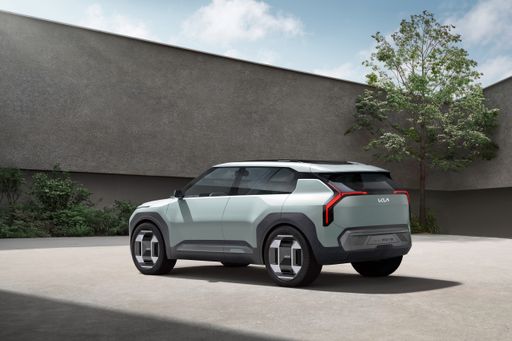 @ kiamedia.com
@ kiamedia.com
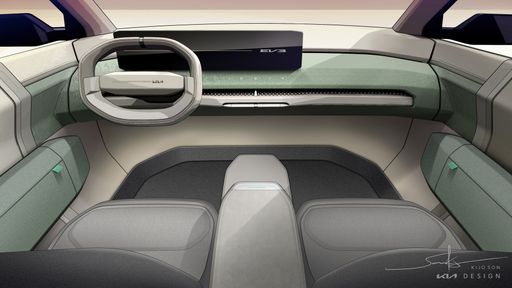 @ kiamedia.com
@ kiamedia.com
Mercedes EQE SUV
The Mercedes-Benz EQE SUV represents a fusion of advanced electric mobility and luxurious design, offering a refined driving experience that aligns with the brand's renowned legacy. Inside, the cabin is adorned with high-quality materials and state-of-the-art technology, providing both comfort and functionality for modern drivers. Its dynamic exterior is crafted to enhance aerodynamics while maintaining a distinctive and elegant presence on the road.
details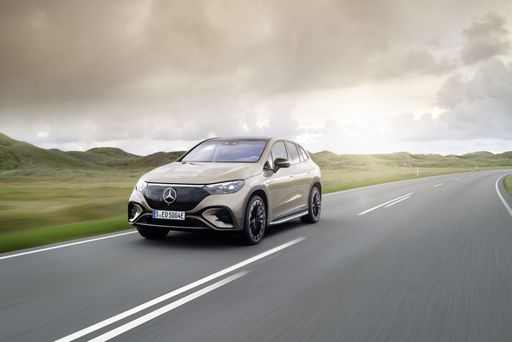 @ group-media.mercedes-benz.com
@ group-media.mercedes-benz.com
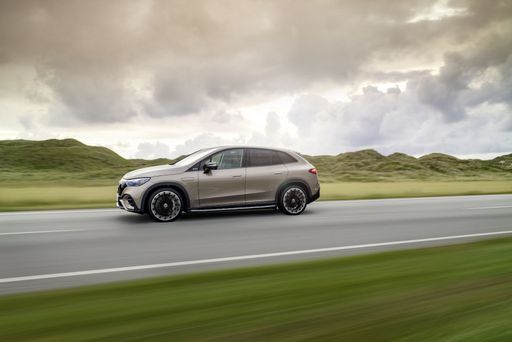 @ group-media.mercedes-benz.com
@ group-media.mercedes-benz.com
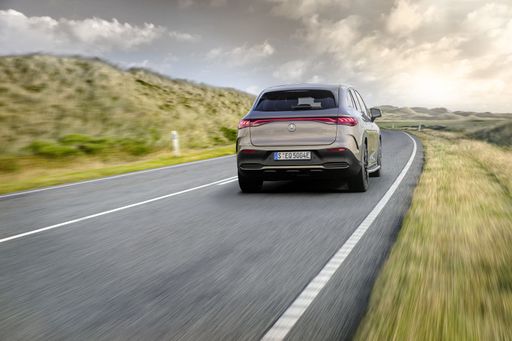 @ group-media.mercedes-benz.com
@ group-media.mercedes-benz.com
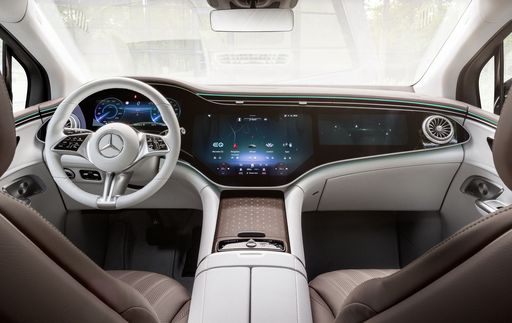 @ group-media.mercedes-benz.com
@ group-media.mercedes-benz.com

|

|
|
|
|
Costs and Consumption |
|
|---|---|
|
Price
30800 - 41700 £
|
Price
71600 - 125100 £
|
|
Consumption L/100km
-
|
Consumption L/100km
-
|
|
Consumption kWh/100km
14.9 - 16.2 kWh
|
Consumption kWh/100km
18.3 - 23.1 kWh
|
|
Electric Range
436 - 605 km
|
Electric Range
453 - 611 km
|
|
Battery Capacity
58.3 - 81.4 kWh
|
Battery Capacity
90.5 - 96 kWh
|
|
co2
0 g/km
|
co2
0 g/km
|
|
Fuel tank capacity
-
|
Fuel tank capacity
-
|
Dimensions and Body |
|
|---|---|
|
Body Type
SUV
|
Body Type
SUV
|
|
Seats
5
|
Seats
5
|
|
Doors
5
|
Doors
4
|
|
Curb weight
1800 - 1885 kg
|
Curb weight
2440 - 2615 kg
|
|
Trunk capacity
460 L
|
Trunk capacity
520 L
|
|
Length
4300 - 4310 mm
|
Length
4863 - 4879 mm
|
|
Width
1850 mm
|
Width
1940 mm
|
|
Height
1560 - 1570 mm
|
Height
1672 - 1685 mm
|
|
Max trunk capacity
1251 L
|
Max trunk capacity
1675 L
|
|
Payload
470 kg
|
Payload
505 - 580 kg
|
Engine and Performance |
|
|---|---|
|
Engine Type
Electric
|
Engine Type
Electric
|
|
Transmission
Automatic
|
Transmission
Automatic
|
|
Transmission Detail
Reduction Gearbox
|
Transmission Detail
Reduction Gearbox
|
|
Drive Type
Front-Wheel Drive
|
Drive Type
All-Wheel Drive, Rear-Wheel Drive
|
|
Power HP
204 HP
|
Power HP
265 - 625 HP
|
|
Acceleration 0-100km/h
7.5 - 7.9 s
|
Acceleration 0-100km/h
3.7 - 7.1 s
|
|
Max Speed
170 km/h
|
Max Speed
210 - 240 km/h
|
|
Torque
283 Nm
|
Torque
550 - 950 Nm
|
|
Number of Cylinders
-
|
Number of Cylinders
-
|
|
Power kW
150 kW
|
Power kW
195 - 460 kW
|
|
Engine capacity
-
|
Engine capacity
-
|
General |
|
|---|---|
|
Model Year
2024
|
Model Year
2023 - 2025
|
|
CO2 Efficiency Class
A
|
CO2 Efficiency Class
A
|
|
Brand
Kia
|
Brand
Mercedes-Benz
|
What drive types are available for the Kia EV3?
The Kia EV3 is offered with Front-Wheel Drive.
The prices and data displayed are estimates based on German list prices and may vary by country. This information is not legally binding.
